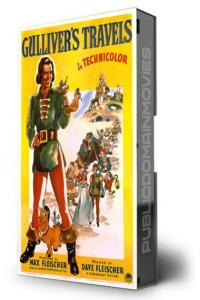
Gulliver’s Travels (1939): A Technicolor Dream in the Golden Age of Animation
Released in 1939, Gulliver’s Travels stands as a landmark in animation history, not merely as an ambitious follow-up to Snow White and the Seven Dwarfs, but as the first full-length animated feature from the Fleischer Studios — the team behind Betty Boop and Popeye. Directed by Dave Fleischer, the film was a bold endeavor to rival Walt Disney, and while it didn’t eclipse Disney’s dominance, it carved out its own magical space in the cinematic imagination. With its lush Technicolor visuals, sweeping orchestral score, and charming take on Jonathan Swift’s novel, Gulliver’s Travels became an enduring artifact of 1930s animation.
The story follows Lemuel Gulliver as he washes ashore in the kingdom of Lilliput and becomes entangled in a petty war between two miniature nations over a royal wedding song. But beyond its fairy-tale surface lies the hallmark of Fleischer storytelling — physical comedy, rubbery character designs, and moments of quiet poignancy. The voice cast includes Sam Parker as the noble and mild Gulliver, with Pinto Colvig (the original voice of Disney’s Goofy) lending his unmistakable tone to supporting characters. The film weaves humor, romance, and satire into a delightful blend, buoyed by rotoscoped animation that brought a level of realism to Gulliver’s movements rarely seen at the time.
Gulliver’s Travels (1939) is now in the public domain, making it freely available for viewing and download, a rare privilege for fans of classic animation. For those searching for “free animated movies online” or “public domain classic films,” this one is a must-see. While it may not have the narrative depth of Disney’s early works, it remains a visually rich and historically significant piece of cinema. It deserves rediscovery, not only for its technical achievements but as a reminder of a time when animation was just beginning to test the boundaries of the possible.







